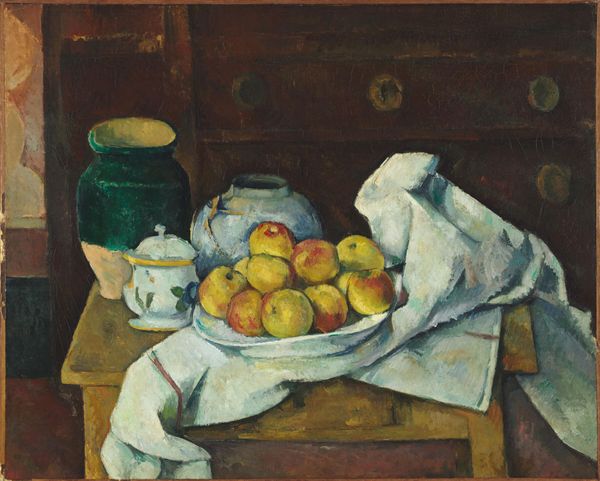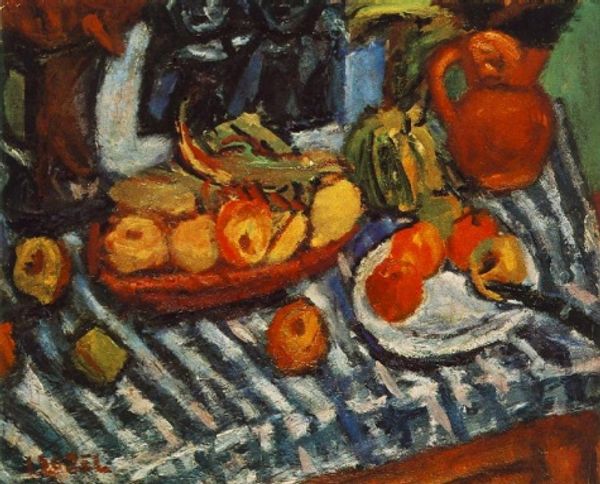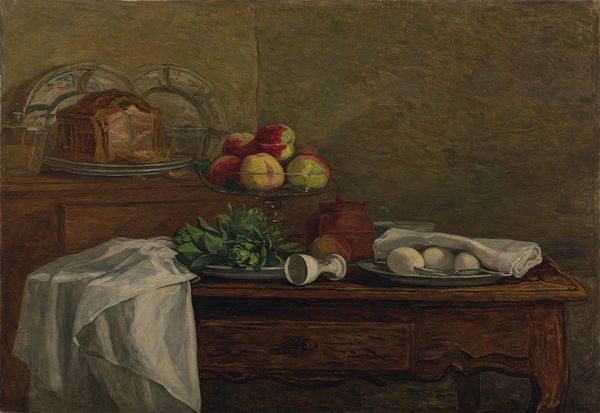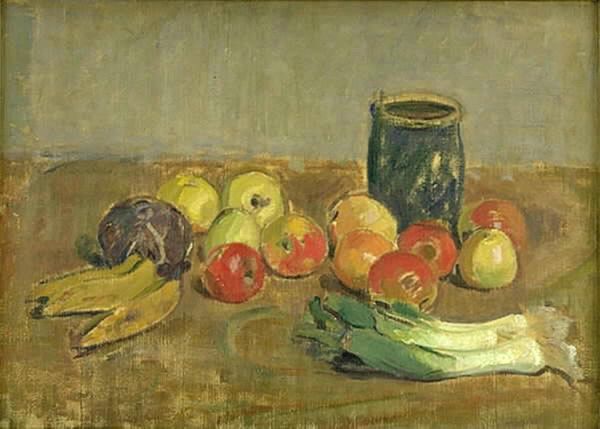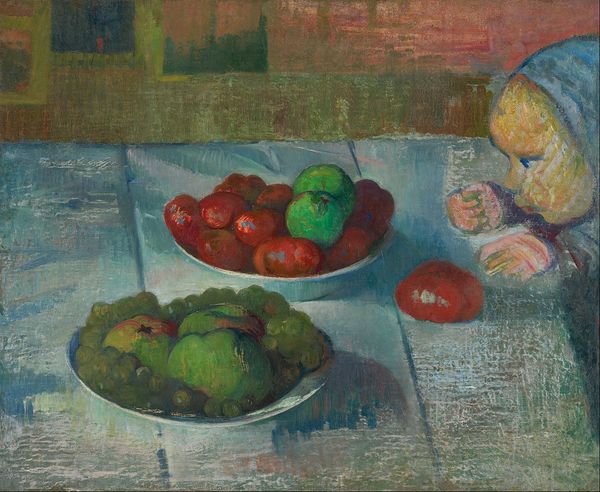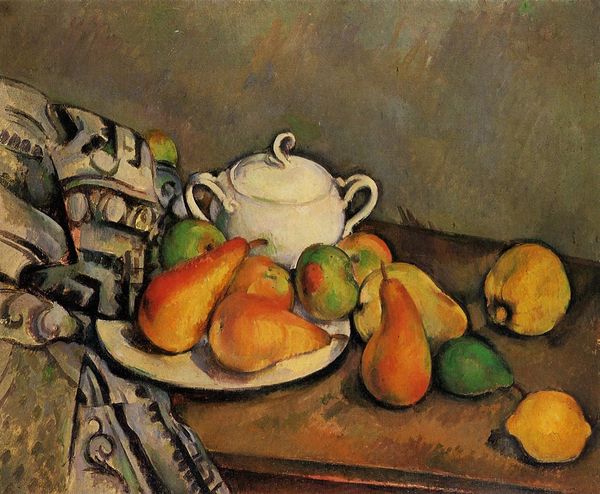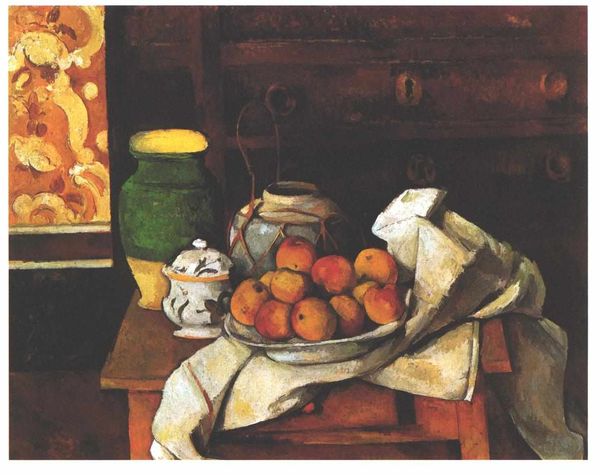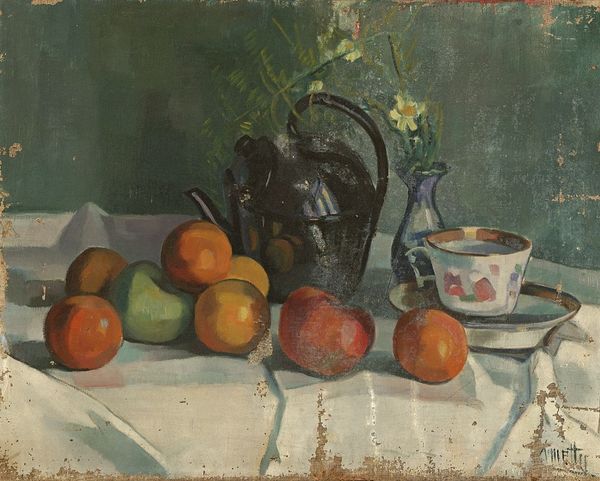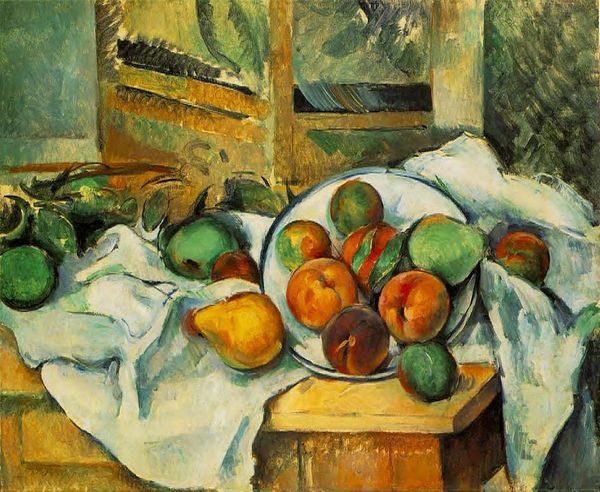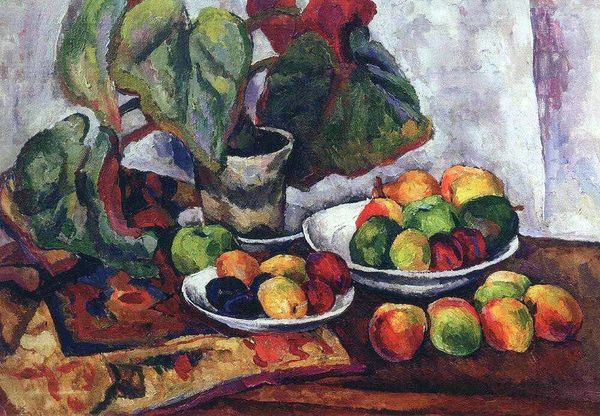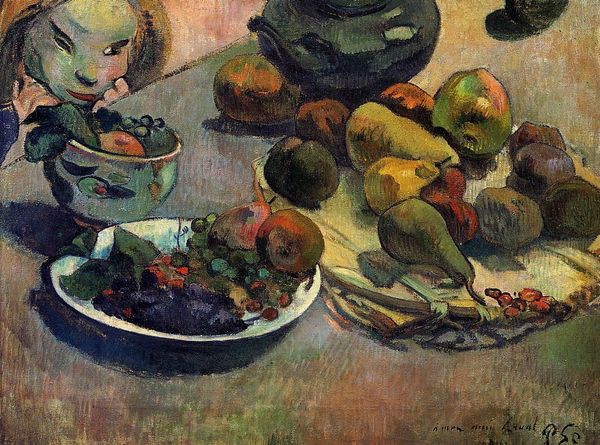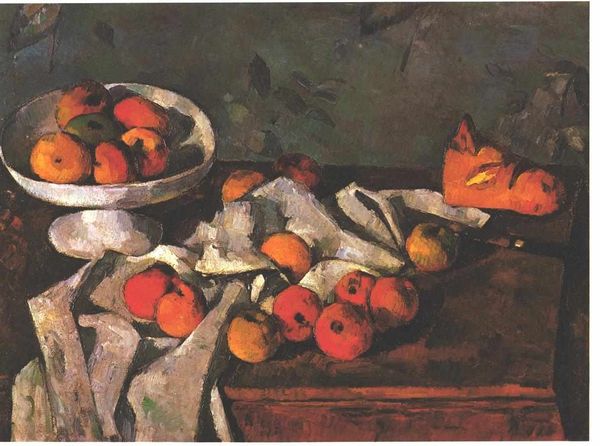
Copyright: Zinaida Serebriakova,Fair Use
Editor: This is Zinaida Serebriakova's "Still Life with Asparagus and Strawberries," painted in 1932. The collection of foods feels so tangible; you can almost smell the fresh bread and the ripe fruit! What formal elements stand out to you most in this composition? Curator: Note how Serebriakova has arranged these objects. The composition exhibits a clear understanding of form. See how she plays with texture? The smoothness of the strawberries contrasts so acutely with the rough, fibrous texture of the artichokes, creating a compelling tactile experience for the eye. Editor: Absolutely! I see that now. The bright red of the strawberries really pops against the muted greens and browns of the other objects. Curator: Indeed. And consider the structure of the composition. The objects are not merely placed, but carefully orchestrated. The diagonal line of the asparagus draws the eye from the bottom left to the upper right, engaging the whole space. Editor: It’s interesting that you say that. It gives a sense of restrained energy to an otherwise quite ordinary scene. Curator: Precisely. The ordinary transformed through masterful composition and attention to detail. Did you observe how the diagonal continues upwards in the handle and shape of the jar, thus generating vertical momentum to counteract the horizontal spread of edible items? Editor: No, I didn't notice the jar at first, but that is quite clever! Thank you for helping me perceive those compositional intricacies; the layering of forms adds real depth. Curator: A worthwhile observation. Analyzing structure and composition unlocks the deeper potential of visual understanding.
Comments
No comments
Be the first to comment and join the conversation on the ultimate creative platform.
